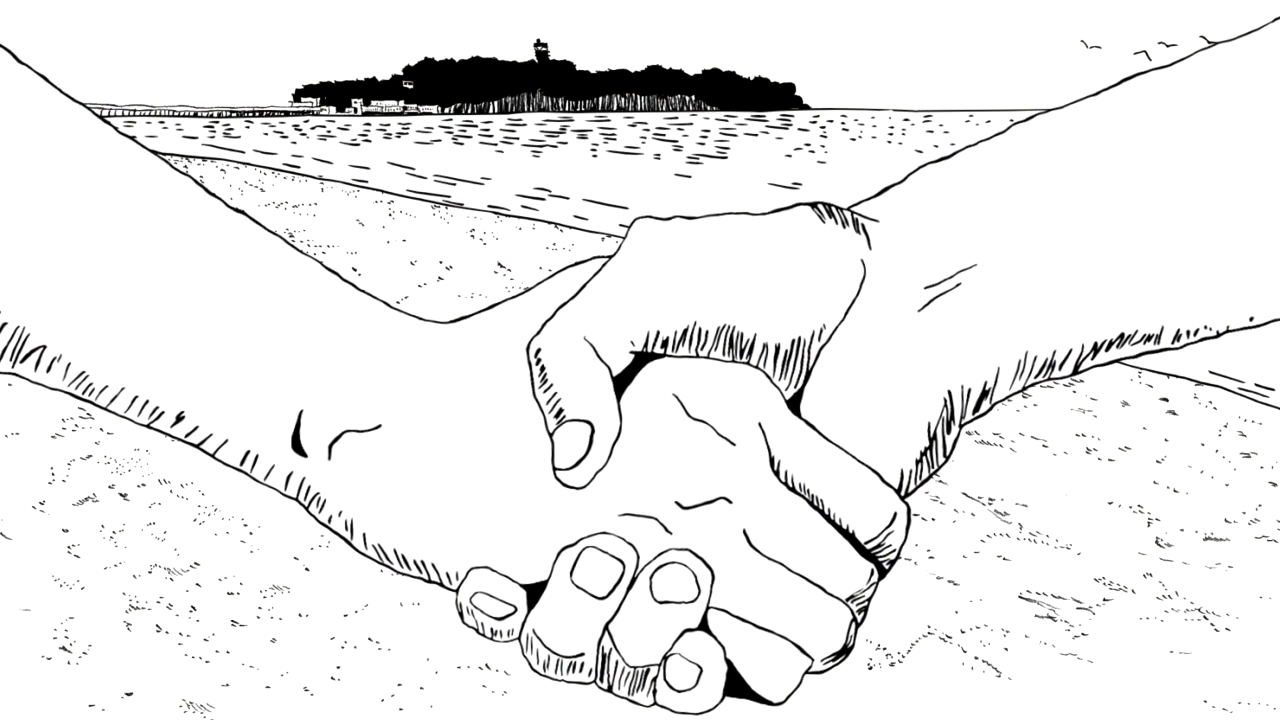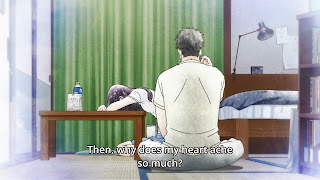Shigatsu wa Kimi no Uso (Your Lie in April) Episode 2
Only days after the superb Shingeki no Bahamut dance scene, Shigatsu
wa Kimi no Uso brought us another enjoyable performance scene. Kaori’s
performance of the Kreutzer Sonata was brought to life by purposeful shot
variety that gave viewers different vantage points of the performance.
Here’s the scene:
________________________________________________________________________
 |
 |
 |
Just like the Shingeki no Bahamut dance scene, Kaori’s
violin scene uses multiple low angle shots to present the performance in a
grander scale. These shots exude stage presence that was conducive in making
this scene engrossing. The low angle shots were also done in varying sizes. The
full shots presented Kaori’s body language while the closer shots showed her emotions.
 |
 |
 |
The shots from behind Kaori give the viewers the performer’s
perspective. This perspective gives us an intimidating stage view of the venue,
and aids in relating the nerves and exhilaration of performing in front of an
audience. The use of low angle exaggerates the scale of the venue but also
shows how a captivating performance can make it feel small and intimate.
 |
 |
These wide shots put the viewers among the audience and give
an in-person feel of the performance.
 |
 |
 |
 |
 |
 |
My favorite moments were the engaging use of extreme close
ups in match on action cuts. The first sequence (top three images) was during a
brief and calm pause in the sonata. The calmness in Kaori’s eyes during the brief
silence builds anticipation for the music that’s about to come. As Kaori raises
her bow the sequence cuts to a medium shot of her gracefully finishing the
motion.
The second sequence (bottom three images) is again during a
brief pause but this time before shifting to a faster pace. Again, the mood of the
performance is seen in her eyes, which pop wide with intensity. The look also
matches her motion, as she swings the bow with less grace but more energy.
The only negative about this scene was the use of overhead
shots. It’s understandable to use it once for shot variety but doing it
multiple times briefly took me out of the performance.
________________________________________________________________________
 |
 |
 |
 |
Around the end of this episode were the different lateral
tracking shots of Arima. In these shots Arima constantly switches from one side
of the frame to another. The lack of balance and continuity visually displays
his confusing emotions. He’s puzzled by his indescribable feelings towards
Kaori, and just like the lateral tracking shots he keeps switching between
wanting and not wanting to see/hear her.
The gif of the last tracking shot cleverly uses camera
movement to actively add visual weight. The small lead room in the start of the
shot gives Arima’s eyeline very little visual weight. But as Arima stops on his
tracks and gazes off screen, the camera keeps moving to give his eyeline more
visual weight. This effectively adds drama and romance as the scene cuts to a waiting
Kaori.
________________________________________________________________________
Budget Framing
This is pretty self explanatory. Only the top of the heads
were framed in order to save time and money on animation. Most of the episode’s
time and money were most likely spent on the violin scene which was well worth
it.




Comments
Post a Comment